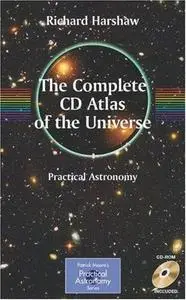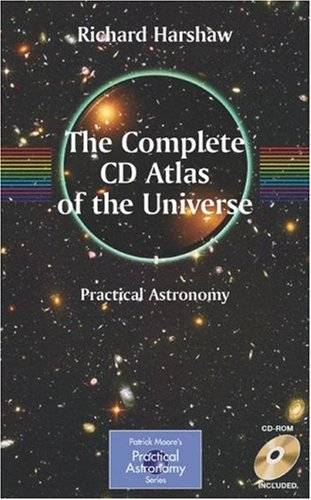Richard Harshaw "The Complete CD Guide to the Universe (Patrick Moore's Practical Astronomy Series)"
Springer | 120 pages | 2007-04-13 | ISBN:0387468935 | PDF | 7.9MB
This is without doubt the largest and most comprehensive atlas of the universe ever created for amateur astronomers. It is the first major observing guide for amateurs since Burnhams Celestial Handbook. With finder charts of large-scale and unprecedented detail, in both normal and mirror-image views (for users of the ubiquitous Meade and Celestron Schmidt-Cassegrain telescope ranges), and an extensive list of 14,000 objects, it will provide a detailed observing guide for almost any practical amateur astronomer, up to the most advanced.
Spanning some 3,000 pages, this is a project that is possible only on CD-ROM.
The atlas covers the whole range of objects viewable by amateur astronomers with 8- to 11-inch telescopes, from latitude approx +40 degrees. The projected total number of objects is (currently) 13,238, compared with Burnhams approximately 5,000 double stars (in three volumes).
This is much more than just a catalog of objects.
As planned, the atlas will have about 270 double star images and sketches, and 590 or so deep-sky images and sketches. Comparisons with other atlases are invidious, but Tirions atlas and Uranometria, for example, dont go as deep in magnitude and the scale is unsuitable for "star hopping" in the eyepiecewhere the action REALLY takes place. The charts in the Complete CD Atlas of the Universe and the scale they are on, allow the user to get enough detail to easily find the objects described. In addition mirror-image charts are supplied for instruments with reverse fields (all SCTs).
This is also much more than planetarium software.
Many planetarium programs do not have good object databases, and those that do have databases that are too large for practical field use. For example, TheSky, one of the most popular (and best) programs, can display the entire Washington Double Star Catalog (some 120,000 doubles!), but 90% of these are not resolvable (or even viewable from certain horizons), and there is no way to determine that by looking at the screen. The result is that there are more objects plotted on the screen than you can actually see, and the clutter makes it very hard to find what you want.
The CD-R pages are extensively indexed and referenced for quick location of objects, areas, classes of objects etc..
The accompanying book gives an introduction to the Atlas, showcases the maps (thus buyers can see what they are getting without running the CD-R), describes the CD-R content and organization, and includes various appendices.



